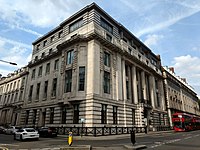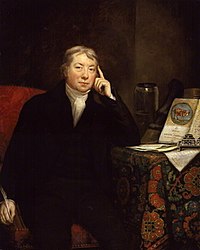| Jenner Medal of the Royal Society of Medicine | |
|---|---|
|
Royal Society of Medicine (top) and Edward Jenner by James Northcote (below) | |
| Awarded for | Contributions to epidemiology and public health |
| Date | 1896 |
| Location | London |
| Country | United Kingdom |
| Presented by | Royal Society of Medicine at the recommendation of the Epidemiology and Public Health Section |
| Hosted by | Royal Society of Medicine, London |
| Formerly called | Jenner Memorial Medal of the Epidemiological Society of London |
| Motto | Venienti Occurrite Morbo |
| Highlights | |
| First recipient | Sir William Henry Power (1898) |
| Other anniversaries | Leonard Colebrook (1962 centenary of Sydney Copeman's birth) |
| Last known recipient | Sir Michael G. Marmot (2010) |
The Jenner Medal of the Royal Society of Medicine, formerly known as the Jenner Memorial Medal or the Jenner Medal of the Epidemiological Society of London, is awarded from time to time by the Royal Society of Medicine (RSM), London, at the recommendation of its Epidemiology and Public Health Section, to individuals who have undertaken distinguished work in epidemiological research or made significant contributions in preventing and controlling epidemic disease. It is named in honour of Edward Jenner's discovery of a means of smallpox vaccination. The first Medal was awarded in 1898, presented by Sir Patrick Manson to Sir William Henry Power, the then Medical Officer of Health for London.
The Medal was designed in bronze by Allan Wyon. The date of the award and recipient's name is engraved on the rim. A three-quarter face of Jenner is engraved on the obverse, and on the reverse is depicted a globe. The original by-laws, published in 1898, stated that the medal should commonly be called the "Jenner Medal", the awardee not be confined to only the British, and that the Epidemiological Society Council would determine when and who receives it. The regulations were revised in 1951, with the recommendation that the Medal be awarded not more frequently than once in five years.

